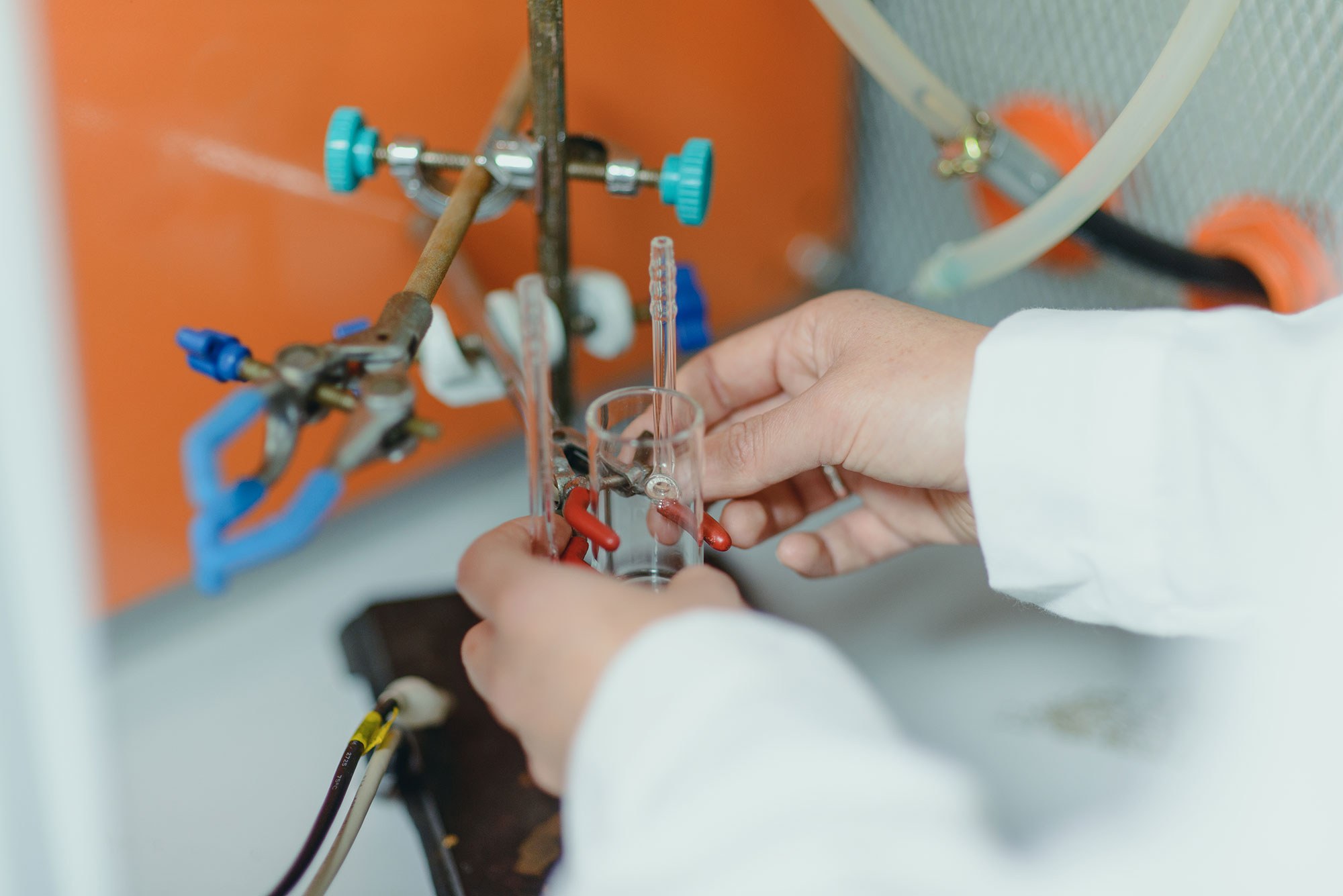Angel-López, A., Norambuena, Á., Arriaza-Echanes, C., Terraza, C. A., Tundidor-Camba, A., Coll, D., & Ortiz, P. A. (2023). Development of Novel Phase-Change Materials Derived from Methoxy Polyethylene Glycol and Aromatic Acyl Chlorides. Polymers, 15(14), 3069. https://doi.org/10.3390/polym15143069
Abstract: In this research, novel, organic, solid-liquid phase-change materials (PCMs) derived from methoxy polyethylene glycol (MPEG) and aromatic acyl chlorides (ACs) were prepared through a condensation reaction. The MPEGs were used as phase-change functional chains with different molecular weights (350, 550, 750, 2000, and 5000 g/mol). The aromatic ACs, terephthaloyl chloride (TPC) and isophthaloyl chloride (IPC), were employed as bulky linker cores. Solubility tests demonstrated that this family of PCMs is soluble in protic polar solvents such as H2O and MeOH, and insoluble in nonpolar solvents such as n-hexane. Fourier-ransform infrared spectroscopy (FT-IR UATR) and nuclear magnetic resonance (1H, 13C, DEPT 135°, COSY, HMQC, and HMBC NMR) were used to confirm the bonding of MPEG chains to ACs. The crystalline morphology of the synthesized materials was examined using polarized optical microscopy (POM), revealing the formation of spherulites with Maltese-cross-extinction patterns. Furthermore, it was confirmed that PCMs with higher molecular weights were crystalline at room temperature and exhibited an increased average spherulite size compared to their precursors. Thermal stability tests conducted through thermogravimetric analysis (TGA) indicated decomposition temperatures close to 400 °C for all PCMs. The phase-change properties were characterized by differential scanning calorimetry (DSC), revealing that the novel PCMs melted and crystallized between −23.7 and 60.2 °C and −39.9 and 45.9 °C, respectively. Moreover, the heat absorbed and released by the PCMs ranged from 57.9 to 198.8 J/g and 48.6 to 195.6 J/g, respectively. Additionally, the PCMs exhibited thermal stability after undergoing thermal cycles of melting-crystallization, indicating that energy absorption and release occurred at nearly constant temperatures. This study presents a new family of high-performance organic PCMs and demonstrates that the orientation of substituent groups in the phenylene ring influences supercooling, transition temperatures, and thermal energy storage capacity depending on the MPEG molecular weight.


